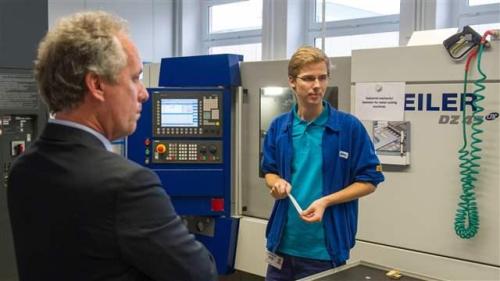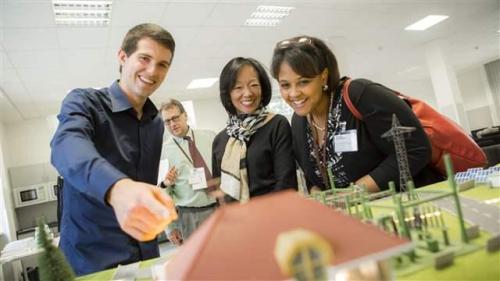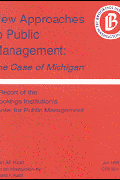Momentum is building in Washington around apprenticeships. In December, the White House announced $100 million in American Apprenticeship Grants, and last month Sens. Cory Booker (D-N.J.) and Tim Scott (R-S.C.) reintroduced the LEAP Act (Leveraging and Energizing America’s Apprenticeship Programs), which would provide tax credits to employers that hire apprentices. Indeed, apprenticeships may be one of the few policy tools aimed at boosting stagnating middle and lower incomes that attracts bipartisan support.
These grants and legislative proposals repurpose federal investments to help cities, regions, and states design and execute apprenticeship programs. Each recognizes that it is at the ground level of the federal system that educational institutions, labor market intermediaries, unions, and firms can best coordinate to deliver training and skills to the country’s workforce.
In light of this, localities and states undertaking new apprenticeship strategies can learn from early successes. In our recent report, Skills and innovation strategies to strengthen manufacturing: Lessons from Germany, we profiled several apprenticeship initiatives, including the Michigan Advanced Technician Training (MAT2) program. Amy Cell, senior vice president of talent enhancement at the Michigan Economic Development Corporation (MEDC), joined us for an email discussion of the evolution of the program and the lessons she’s learned since its inception.
1.
What motivated Michigan to pursue an advanced manufacturing apprenticeship program? How did you determine which skills and occupations it would target?
Governor Rick Snyder was inspired by the German dual education system during his visit to Germany in March 2012. Michigan was struggling with a skills gap in critical manufacturing occupations, and the partnership that exists between government, industry, and education in Germany was a model that he wanted to explore as a way to help address the needs of Michigan’s employers.
We worked with a number of key manufacturers and interviewed them to identify their most pressing talent needs to determine the target occupations and priority order of implementation.
2.
How does the apprenticeship program work? What are the respective roles for students, employers, community colleges, and MEDC?
The MAT2 program is similar to other apprenticeship programs in that the employer selects the students, pays for their tuition while they are taking college classes, and pays them a wage while they are working.
The differences include a common curriculum that is competency-based and that is delivered by multiple colleges to multiple employers in a cohort model. A group of employers created the curriculum by identifying the required competencies, and then the colleges aligned and developed the courses to the needs of the employers. There is also an extensive marketing campaign and common application process for candidates.
3.
What was the strategy for engaging all these necessary players to make this successful? How was it sold?
The key partners were all at the table very early in the process and agreed on the need and vision. We decided to launch the program first regionally, before expanding statewide. We chose Southeast Michigan as the initial starting point because of the high number of manufacturers in metro Detroit.
We knew that we needed to provide the colleges with a cohort size of approximately 15 students each to make it economically feasible, and thus needed to get to a critical mass of employers within a reasonable distance of the college. A group of around 10 employers initially created the vision, and we quickly identified colleges that had equipment and experiences in our first area of study—mechatronics. The program has since expanded to other parts of the state and includes study areas in computer numerical control (CNC) manufacturing, technical product design, and information technology.
All of the parties understood that we had a critical skills gap that needed an innovative, partner-based solution in order to try to replicate the German model’s success. Starting in one region as opposed to statewide allowed us to concentrate our marketing and outreach efforts to students and employers to ensure a successful initial launch. We were very lucky to have willing and engaged partners, who were flexible and committed to each other and the program.
4.
While it’s still early, what have you learned from the experience of launching and expanding MAT²? What lessons would you give to other regions and states thinking about launching an apprenticeship program?
We have learned a great deal over the past three years! It is very important for all of the partners to understand that it can be a paradigm shift, and that certain elements are going to take more time, or be more expensive, than initially planned. It is also important to provide adequate staffing support to facilitate employer meetings and to recruit high-quality students.
5.
Over the next couple years, what are you hoping to accomplish as part of MAT²? How do you think about success?
We are hoping to fully expand MAT² across the state and targeting around 175 slots this year, up from 98, and to permanently shift the education-employer partnership paradigm so that more and more training programs are industry driven. We also hope to transition this to an industry-run initiative, as it is done in Germany, to ensure long-term sustainability.










Commentary
Launching a regional apprenticeship program: A Q&A with Amy Cell of the Michigan Economic Development Corporation
March 16, 2015